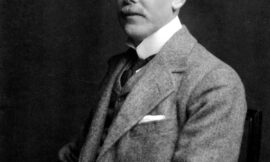Richard III of England, a king whose reign lasted from 1483 until his death in 1485, remains one of the most controversial and fascinating figures in English history. His life and reign have been the subject of extensive historical debate, myth, and literature, most notably immortalized by William Shakespeare’s play “Richard III.”
Born on October 2, 1452, at Fotheringhay Castle, Richard was the twelfth child of Richard Plantagenet, Duke of York, and Cecily Neville. His early years were marked by the turbulent period of the Wars of the Roses, a series of civil wars fought between the houses of Lancaster and York for control of the English throne. The Yorkists, to whom Richard belonged, were victorious for much of his childhood, and in 1461, his elder brother, Edward, became King Edward IV.
Richard grew up in an environment where loyalty and political acumen were crucial for survival. He received an education fitting for a noble of his standing, including training in martial skills and governance. As he matured, Richard developed a reputation as a loyal supporter of his brother, Edward IV. He was appointed Duke of Gloucester in 1461, and he held various important military and administrative positions throughout Edward’s reign, demonstrating his capabilities as both a soldier and a statesman.
The death of Edward IV in 1483 marked a turning point in Richard’s life. Edward left behind two young sons, Edward V and Richard of Shrewsbury, Duke of York. Richard was named Lord Protector for his nephew, Edward V, but his role quickly evolved into something more contentious. Amidst political instability and allegations of plots against him, Richard moved decisively. He declared the marriage of Edward IV and Elizabeth Woodville invalid, rendering their children illegitimate and ineligible for the throne. Subsequently, Richard was crowned King Richard III on July 6, 1483.
Richard’s ascension to the throne was mired in controversy, especially concerning the fate of his nephews, known as the Princes in the Tower. The young princes were confined to the Tower of London and subsequently disappeared, leading to widespread speculation and accusations that Richard had them murdered to secure his claim to the throne. This alleged crime has overshadowed his reign and tainted his historical reputation, making him a symbol of tyranny and ruthlessness in popular culture.
Despite the controversies, Richard III’s short reign saw some noteworthy achievements. He instituted legal reforms aimed at making the judicial system more fair and accessible. The introduction of bail, protections against arbitrary taxation, and efforts to promote trade and commerce were some of his notable contributions. However, his efforts to consolidate power and secure his position were constantly challenged by those loyal to the Lancastrian cause and disaffected Yorkists.
The culmination of Richard’s reign came at the Battle of Bosworth Field on August 22, 1485. Richard faced the forces of Henry Tudor, a Lancastrian claimant to the throne, who would later become Henry VII. Richard fought valiantly but was ultimately defeated and killed in the battle, marking the end of the Plantagenet dynasty and the beginning of the Tudor era. His death also signaled the conclusion of the Wars of the Roses.
For centuries, Richard III’s legacy was shaped by Tudor propaganda and the dramatic portrayal by Shakespeare, which painted him as a malevolent, deformed villain. However, modern historians have re-evaluated his life and reign, striving to separate the man from the myth. The discovery of his remains in a Leicester car park in 2012 and subsequent reburial in Leicester Cathedral in 2015 reignited interest in his story, prompting a more nuanced understanding of Richard III as a complex figure whose legacy is still debated today.



